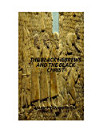Autobiography of Ahmose pen-Ebana
O ovoj e-knjizi
As Ahmose pen-Ebana described himself as a youth at the Battle of Avaris, where he served as his father’s replacement in the fleet, it is likely that he did not retire until he was over 60. He listed extensive campaigns throughout his life, mostly in northern Sudan along the Nile and Yellow Nile, before the pharaoh turned his attention to the north, and sent them to occupy Syria.
Ahmose pen-Ebana was a major figure in the battles that forged Egypt’s empire during the New Kingdom era, in the mid-1500 BCE. According to his autobiography, he fought in the Battle of Avaris (circa 1572 BCE), when the Theban Dynasty overthrew the Hyksos Dynasty, and then he fought at the Battle of Sharuhen a few years later, in which the last of the Hyksos Dynasty was destroyed. After these battles, the Thebans had gained political control over both Northern Egypt and Canaan, although the level of control exercised in Canaan is unclear. Then he reports fighting in a series of battles in Nubia as the Thebans conquered and enslaved northern Sudan. A canal had been dug through the shallow third cataract during the Middle Kingdom, which the Egyptians re-dug as soon as they took control of the region again during the campaigns of Ahmose I, who campaigned in Nubia between approximately 1565 and 1550 BCE. The third cataract appears to also be the farthest south the Egyptians built a fortress during Ahmose pen-Ebana’s lifetime, the fortress at Tombos, which was more likely there to keep the canal clear for trade than to protect Egyptians from the Nubian tribes.
Ahmose pen-Ebana then reports campaigns that were likely along the Yellow Nile in Darfur (modern Wadi Howar), and east past the fourth cataract of the Nile, before the Pharaoh Thutmose I declared victory in the south and marched his army as far north as it could go, invading the Mitanni Empire in Syria. His march through Canaan to the Euphrates was described as peaceful, and apparently, the Canaanite princes recognized his authority over the land. This march is believed to have happened in 1558 BCE, and was his second peaceful march through Canaan, the first in 1560 BCE, shortly after his coronation. Ahmose pen-Ebana does not report being part of that campaign, nor the earlier campaign of Ahmose I into Canaan after conquering Sharuhen, which strongly suggests that he did not take part in these campaigns. His long service in the Egyptian military includes service under three Pharaohs: Ahmose I (circa 1582 to 1557 BCE), Amenhotep I (circa 1557 to 1537 BCE), and Thutmose I (circa 1537 to 1527 BCE), and included many of the most important battles that laid the foundation of the New Kingdom, allowing Egyptologists to understand the order of these battles, as well as the Egyptian view of the battles and their enemies.










